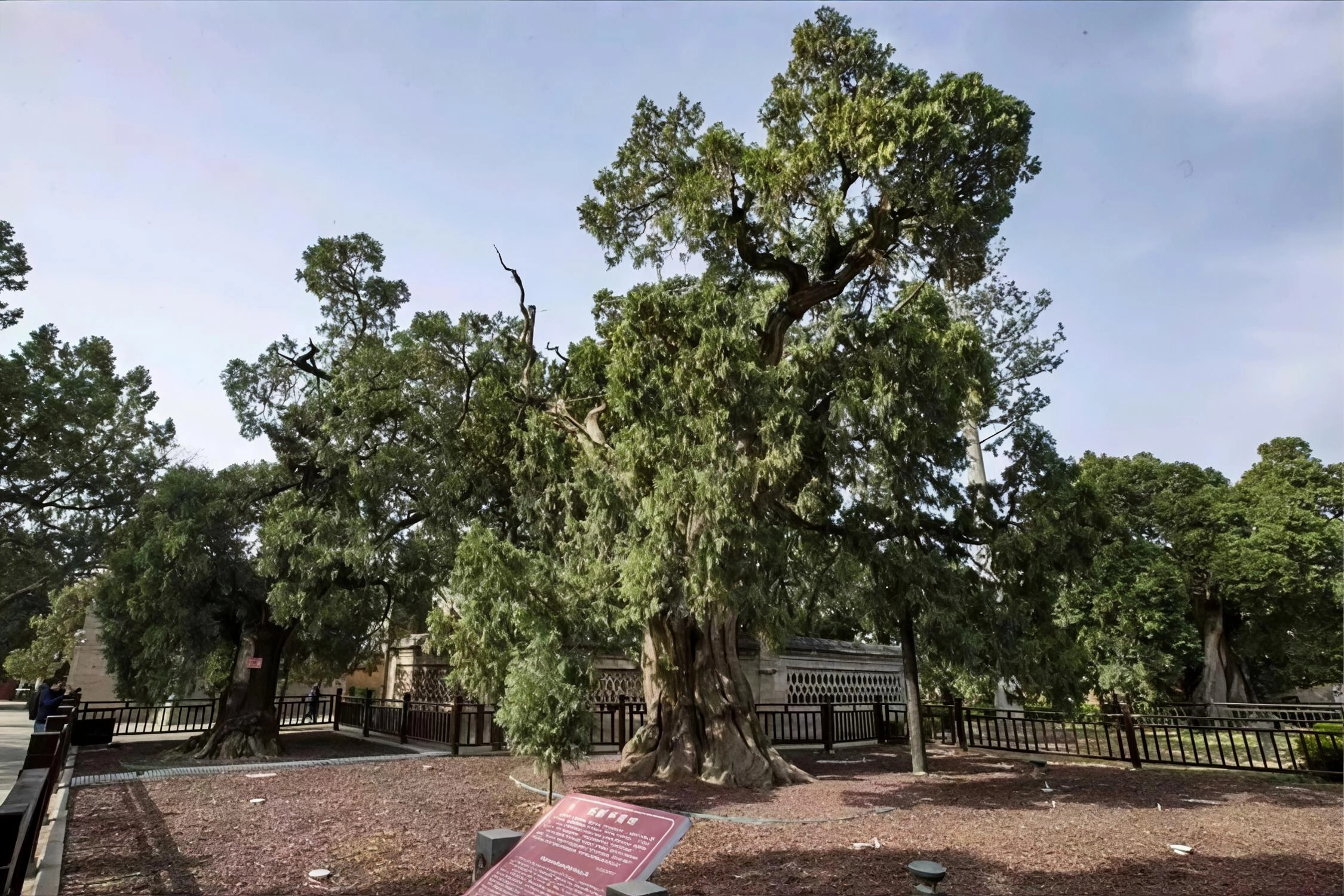5,000-year-old cypress tree at Cangjie Temple anchors new conservation push
Visitors arriving at the Cangjie Temple in Baishui county often find themselves confronting an unlikely symbol of endurance: a cypress so enormous and timeworn that its bark seems to peel in geological layers.
Local tradition holds that Cangjie—the semi-mythical inventor of Chinese characters—planted it himself. Whether or not that story is literal hardly matters; the 5,000-year-old tree has become a living hinge between the origins of Chinese writing and an era when digital sensors, legal frameworks, and even spaceflight are enlisted to keep such relics alive.
China is in the midst of an unprecedented effort to protect its ancient trees, many of which are woven deep into the nation’s cultural memory. Shaanxi province alone counts more than 727,000 ancient and notable trees, yet the concentration at Cangjie Temple stands out: more than 40 of them exceed a thousand years in age.
“There are more than 40 cypresses over 1,000 years old here, with an average age of around 3,000 years. In addition to the 5,000-year-old Cangjie cypress, three are over 4,000 years old and 14 are more than 3,000,” said tour guide Liang Ni, directing attention toward the giants that crowd the temple grounds.
These trees carry stories that textbooks can’t quite handle. Tradition says Cangjie, historian to legendary ancestor Huangdi, or the Yellow Emperor, invented written characters when knot-tying no longer kept pace with governance. The cypress associated with him stands as a living metaphor for that shift—from memory encoded in rope and ritual to memory fixed in lines and strokes. Visitors still touch its bark as if searching for the moment when myth turned into script.
But the country’s ancient trees face pressures that their legendary origins cannot shield them from: soil erosion, extreme weather, and the strain of modern tourism. That vulnerability has pushed local governments to rethink conservation as more than caretaking—it is a race against time to preserve biological survivors that double as cultural touchstones.
In 2019, Weinan adopted the Regulations on the Protection of the Cangjie Tomb and Temple, placing the grove under formal legal protection. A separate regulation for ancient and famous trees expanded the safety net, supporting new methods that blend traditional horticulture with 21st-century monitoring.
For the Cangjie cypress, that monitoring is personal. Authorities created a detailed digital file for the tree, tracking its growth, bark condition, soil moisture, and environmental stresses. The system feeds into a multi-level platform where specialists can monitor changes in real time.
“With digital monitoring, we can track the cypress’s growth in real time. If we see yellowing leaves or abnormal bark, the expert team comes promptly to diagnose and carry out rejuvenation measures,” said Li Min, deputy head of the Cangjie Temple Cultural Relics Administration. A “one tree, one team” model ensures that horticultural experts, cultural-relics specialists, and local caretakers function as a single unit to safeguard the ancient tree.
Yet the effort to protect these trees is not only about preventing decline—it is also about keeping the culture they anchor alive. Each year around Grain Rain, or “Guyu,” which coincides with UN Chinese Language Day, the temple becomes a quiet classroom. Children practice woodblock printing beneath the cypress canopy, tracing the development of characters while surrounded by trees old enough to have witnessed their earliest forms. Exhibition rooms nearby extend the lesson, pairing artifacts and illustrations with the living history outside.
What has startled even long-time caretakers, however, is the resilience the ancient cypress still possesses. In 2012, a small sapling appeared at the base of the legendary tree—a natural descendant of a 5,000-year-old parent. “It proves the Cangjie cypress can reproduce naturally from its seeds. Thirteen years on, it’s thriving,” said Ren Zhigang of the temple administration. That discovery reframed the tree not only as a relic but as an active lineage—one capable of renewing itself.
From that realization emerged a bold experiment. Baishui county partnered with the Shaanxi provincial space breeding engineering technology research center to test whether the tree’s genetic line could be strengthened through exposure to space.
“Space breeding provides a new technological pathway for conserving and revitalizing the genetic resources of the Cangjie cypress,” Ren explained. “The offspring may be more vigorous and resilient, which is significant for preserving the variety.”
In 2020, seeds from the ancient cypress were loaded onto a Long March rocket, spending time in orbit before being returned to Earth.
Now, at the Cangjie Cypress Breeding Base, those space-bred seeds have grown into slender seedlings with bright new shoots. Several have already been transplanted back at the temple, where they stand like footnotes beneath their 5,000-year-old ancestor. Through them, China’s conservation efforts reach beyond preservation toward reinvention—a way of carrying ancient biological memory into an age defined by rapid technological change.
The old cypress still watches over the temple, but its legacy now stretches farther than anyone could have imagined, rooted in the past and reaching, improbably, toward the future.



0 Comment